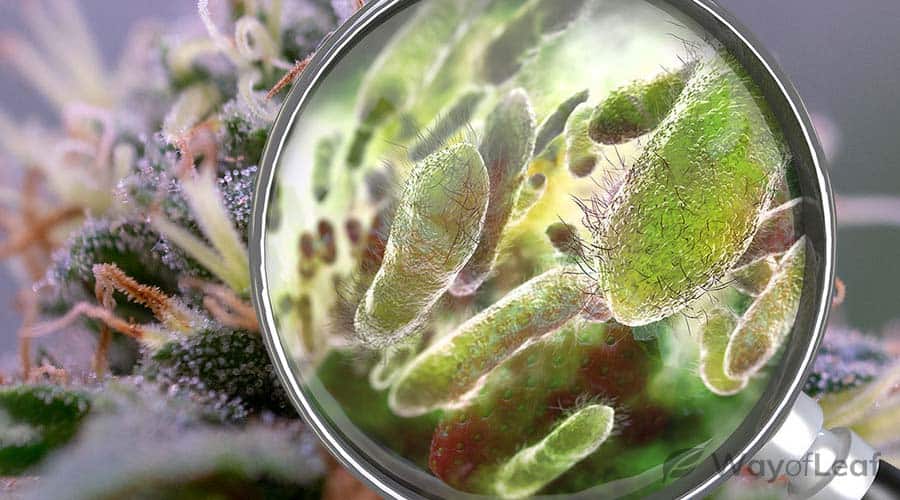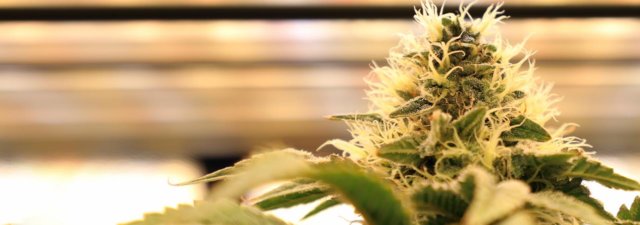You might think that microorganisms in your cannabis garden are a terrible thing. After all, microscopic creatures like bacteria and fungi can cause diseases and potentially ruin your harvest.
However, many microorganisms actually improve the health of your cannabis plants. Here are some of the benefits they provide and how to use them for maximum effect.
Why Use Microorganisms in Your Cannabis Garden?
Microorganisms are everywhere. They live in water and soil, on the surface of our skin, and even inside our bodies.
They include bacteria, viruses, and fungi, and, in some cases, these organisms can cause disease. However, some species are essential for maintaining good health, both for humans and our planet’s ecosystem.
Plants are no exception, and many gardeners know that microorganisms can provide numerous benefits for their crops. These organisms tend to live in an area called the rhizosphere, which surrounds the roots of the plant.
They build what is known as ‘living soil,’ a substance with a thriving population of helpful creatures, each possessing unique assets; some help to improve nutrient uptake, while others keep pests at bay.
Therefore, these microorganisms are equally useful whether you are growing in soil or in a hydroponics system.
In fact, they can be even more critical for hydroponic growing. Since you will be starting with fresh water each time, it is necessary to add beneficial bacteria to your system. Soil is much simpler to work with, as it usually already has a variety of microorganisms inhabiting it.
So, which are the best microorganisms for growing cannabis? Let’s take a look.
Which Microorganisms Are the Best for Cannabis Growing?
Several types of microorganisms can help enhance the health of your cannabis garden. They include:
Bacteria
These are single-celled organisms that thrive in a multitude of different environments. There are many different species, and some, such as Streptococcus and Staphylococcus, can be harmful.
However, there are plenty of good bacteria too. Some beneficial bacteria for cannabis gardens include Cyanobacteria (blue-green algae) and Arthrobacter species.
Bacteria can benefit cannabis plants in numerous ways. They help to increase the availability of nutrients in the growing media. They can also act as organic pesticides and reduce the plant’s susceptibility to stress.
Fungi
There are countless different species of fungi. Some are very simple microorganisms, while others are highly complex.
It is a specific type of fungi known as mycorrhizae that is beneficial to cannabis. They live on or around the roots, forming a symbiotic relationship with the plant.
The plant provides the fungi with nutrients in the form of carbohydrates, amino acids, and organic acids. In return, the fungi enhance water and nutrient absorption.
Some fungi also benefit the cannabis plant’s immune system and increase its resistance to disease.
Nematodes
Nematodes are miniscule, parasitic worms that live in the soil. There are many species, and some can actually damage your cannabis plant’s root system.
However, other species, such as Steinernema feltiae feed on pests such as fungus gnat and thrip larvae. Therefore, they can reduce the need for chemical pesticides.
How Microorganisms Keep Your Cannabis Plants Healthy
There are several ways in which beneficial microorganisms can keep your cannabis garden vibrant and pest-free:

Fixing Nitrogen in Soil
Nitrogen is an essential cannabis nutrient. However, for it to become useful, it needs to be in the form of nitrates.
Specific bacteria help to break down ammonia into nitrites and nitrates, a process called nitrification. Cyanobacteria, Rhizobia, and Azotobacter vinelandii are all excellent choices here.
Increasing Availability of Nutrients
Cannabis plants sometimes struggle to take up vital nutrients. For example, phosphorus tends to react with other minerals in the soil and quickly becomes unavailable.
Rhizobacteria convert this element into a form that is much easier to absorb. In the process, other nutrients, such as iron, also become more readily available.
Enhancing Root System Efficiency
Mycorrhizae such as Rhizopogan and Glomus intraradices enhance roots’ ability to take up nutrients and water. They also provide additional resistance against disease.
Reducing Toxicity
While nutrients are necessary for prolific growth, too many can cause toxicity. Bacteria, including Arthrobacter globiforms and Bacillus streptomyces, can help to prevent this situation.
They are also useful for removing residual pesticides and toxic forms of chromium from the soil.
Controlling Pests
Microorganisms like nematodes can help control pests in your cannabis garden. Some species of bacteria, including Bacillus thuringiensis, may also help.
Reducing Plant Stress
Extreme temperatures and lack of water or light can all stress your plants and reduce your yield. Helpful bacteria, such as Bacillus subtilis, help to increase resilience and combat these issues.
Harmful Effects of Microorganisms on Cannabis
While many different microorganisms can help you grow healthy marijuana, some could cause serious harm:
Pythium
This is a type of fungus that causes root rot. It loves to live in moist soil, so it is essential to avoid overwatering and keep your grow media well-aerated.
Signs of Pythium infections include brown, unhealthy-looking roots and fluctuating pH levels.
Phytophthora
This is a type of mold that prevents plants from absorbing nutrients effectively. Leaves become yellow and wilt or die back.
Fusarium oxysporum
This microorganism is a soil-dwelling fungus. It causes yellowing and wilting of leaves.
How to Make the Most of Cannabis Microorganisms
Like cannabis plants, microorganisms need the right conditions to survive. Therefore, several factors must be considered to increase the levels of beneficial organisms in your garden while reducing the harmful ones.
You will need to consider and monitor carefully:
- The type of growing media you use
- Total dissolved solids (salts) in your grow media
- Oxygen and carbon dioxide levels
- pH (cannabis plants prefer slightly acidic soil)
- Temperature
Growing in soil is more suitable for novices, as hydroponic setups require far more maintenance to remain healthy. One of the easiest ways to encourage helpful microorganisms is to use organic super soil.
Include ingredients like worm castings, bat guano, and fish meal, which are rich in nutrients. Avoid tilling your soil, and do not use pesticides, which can damage helpful microorganisms as well as harmful ones.
You can also use a nutrient broth or compost tea to boost microorganism growth. Check out our tried-and-trusted compost tea recipe to learn more.
Hydroponic growers can purchase products already infused with beneficial microbes and introduce them to their systems.
Final Thoughts on Microorganisms in the Cannabis Garden
Specific microorganisms can provide a wealth of benefits when growing your own cannabis. However, others can be harmful and potentially destroy your entire crop.
Therefore, it is essential to get familiar with these tiny creatures and learn which are friends and which are foes.
In most cases, your plants will let you know if they are unhappy. However, you can stay ahead of the game by paying attention to your growing conditions and making regular adjustments.
By doing this, you can create the perfect environment for your cannabis plants and the microorganisms that benefit them.




![8 Tips for Growing Bruce Banner Marijuana [Grower’s Guide]](https://wayofleaf.com/wp-content/uploads/2019/01/wol_growing-bruce-banner-marijuana-640x225.jpg)

![8 Tips for Growing Lemon Kush Marijuana [Grower’s Guide]](https://wayofleaf.com/wp-content/uploads/2018/12/mj_growing-lemon-kush-marijuana-640x225.jpg)
![8 Tips for Growing Afghan Kush Marijuana [Grower’s Guide]](https://wayofleaf.com/wp-content/uploads/2018/12/tips-for-growing-afghan-kush-marijuana-growers-guide-640x225.jpg)
![8 Tips for Growing Amnesia Haze Cannabis [Grower’s Guide]](https://wayofleaf.com/wp-content/uploads/2018/10/mj-tips-for-growing-amnesia-haze-cannabis-640x225.jpg)



